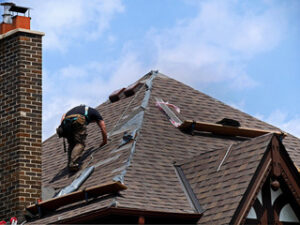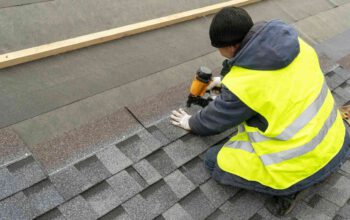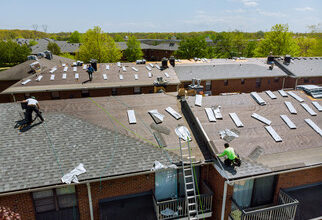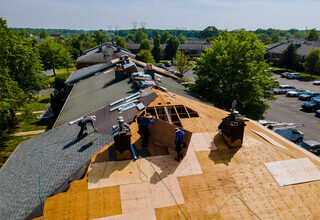You’re not alone if you’ve ever wondered how to install a new roof on the house. Whether you’re a first-timer or a seasoned pro, you’ve likely wondered about the basics of shingle installation. Fortunately, there are some basics you should know before diving in head-first. Read on to learn more about the process and start your roof project today! Also, make sure to ask your local building official about the schedule for inspections.
 Roofing Installation is not a job for the faint of heart. Make sure you’re physically fit and are not afraid of heights. Practice carrying a bundle of shingles and trying out ladders on a friend or family member. It would be best if you also warned your neighbors of your upcoming roofing project. Roofers will provide an extensive warranty to ensure you get the best product and service. By being prepared, you’ll enjoy the benefits of a new roof for years.
Roofing Installation is not a job for the faint of heart. Make sure you’re physically fit and are not afraid of heights. Practice carrying a bundle of shingles and trying out ladders on a friend or family member. It would be best if you also warned your neighbors of your upcoming roofing project. Roofers will provide an extensive warranty to ensure you get the best product and service. By being prepared, you’ll enjoy the benefits of a new roof for years.
First, you’ll need to get a contract. This document will include all the necessary details of the roofing installation project, including the type of material used and coverage. You’ll also need a building permit, which is important for warranty purposes and to ensure the contractor complies with the building code. Finally, you’ll need a letter confirming that the contractor has insurance coverage to provide this service. It might seem complicated, but it’s better to be safe than sorry in an emergency.
Once you’ve completed the basic steps, you’re ready to begin applying the shingles. You can apply self-stick underlayment, a protective plastic that will help prevent water from collecting on the roof. If you need to remove the vent flashing, you can trim the shingles with a utility knife. Remember to overlap the felt paper and the self-stick underlayment to avoid cutting it. Using this method, you’ll be able to work up the roof in a pattern without constantly repositioning the ladder.
The cost of a new roof varies widely, depending on location, materials, and labor. Roofing contractors charge per roofing square. The larger the roof, the more expensive the job will be. You should also consider the size and slope of your house before hiring a roofer. The steeper the slope, the more expensive it will be. However, remember that the more expensive a job is, the more likely it is to end up being.
Choosing the right type of roof is an important decision for your home. A low-slope roof requires big sheets of roofing material or clothes impregnated with asphalt. Generally, the fewer joints between the roof sheets, the lower the chance of leaks. For a flat roof, asphalt roll-roofing is the most common option. These roll-roofing materials come in 3-foot wide rolls with a protective layer of granules. Often, the shingles are held down by mechanical fasteners, glue, or rock garden ballast.
Before hiring a roofer, be sure to know the exact cost of your roof. Quotes from roofing contractors vary widely and can be thousands of dollars. Roofing installers quote by the square foot, time, and material. If you want to make your new roof last, research the materials available. The cost will vary significantly depending on the type of roof material you choose. Depending on the size and complexity of your roof, the cost to reroof your house can range from $1 to $15 per square foot.
When choosing a roofing material, you should know that some materials are better suited for certain climates than others. Please choose the right material for your climate, and make sure it suits your needs and style. A roof with a high degree of durability is better for your house. Wood shake shingles are a common option but don’t look attractive on low-pitched homes. A roof with a lower pitch can be repaired by adding new flashing at the penetration.
When heat leaks through the attic, snow on the roof can melt, causing ice dams. This can result in a leak under the shingles or even leaking inside. To prevent this, you should use a vapor barrier in your attic and adequate insulation and ventilation. Self-adhesive waterproof underlayment is another way to keep your home safe from ice damming. An ice protection membrane is a wise investment for your roof, and may even be required by local building codes for houses in cold climates.



